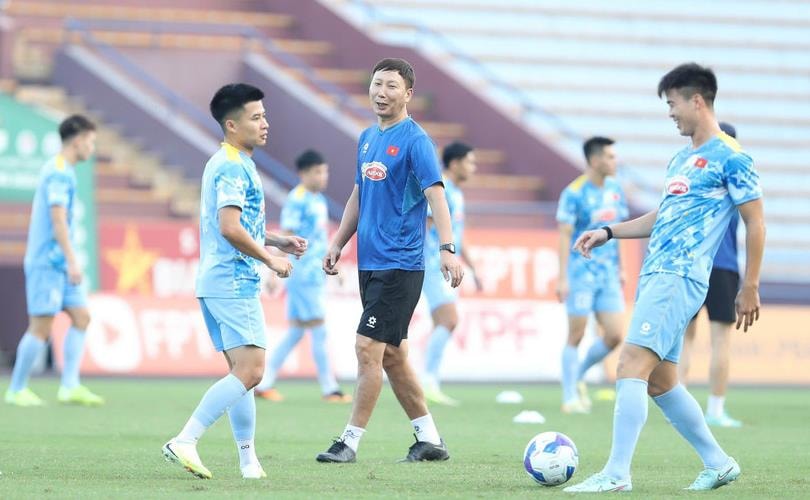Xuan Son returns, Vietnam team looks for a boost against Laos
The striker with 7 goals in 5 matches of AFF Cup 2024 returns after nearly 1 year; Coach Kim Sang-sik can use the second half to test Viet Cuong and Gia Hung to make a sudden increase against Laos.
The biggest highlight before the Vietnam team's away match in Laos comes from the return of Nguyen Xuan Son. After two lackluster matches against Nepal, the return of the striker who scored 7 goals in 5 matches at the AFF Cup 2024 is expected to be a boost for the team to change its appearance, not only aiming for 3 points but also regaining initiative and efficiency in playing style.
Xuan Son's return: a catalyst for the attack
The November training session saw the return of naturalized striker Nguyen Xuan Son after nearly a year of injury treatment. During the training session, he impressed with his powerful sprints, relaxed mentality and affirmed that he had reached perfect physical condition.
However, Xuan Son's ability to start against Laos is still uncertain. With a player who has just recovered, coach Kim Sang-sik can choose the safe option: let him enter the field from the second half to gradually get into the rhythm. Commentator Quang Huy assessed that the optimal scenario is to help Xuan Son regain his playing feeling, aiming for the more important confrontation with Malaysia in March 2026.

Attack problem: avoid dependency, increase mutation
The two matches against Nepal exposed a problem: Vietnam lacked a way to penetrate when the opponent dropped deep. Central combinations were rare, replaced by ineffective crosses. Coach Kim Sang-sik was also unhappy when his team almost conceded a goal at the end of the second leg.
Relying on surprise moments from Hoang Duc or Hai Long makes the gameplay lack diversity. To improve, the team added two young strikers, Nguyen Tran Viet Cuong and Pham Gia Hung. Both are in good form in the V-League and can bring speed and the ability to move proactively to create space. In particular, Viet Cuong stands out in his ability to break down defensive structures—a factor that the coaching staff needs to unlock low-level defenses.

Tactical perspective: layering the spearhead, optimizing the moment
If Xuan Son is used sparingly, Vietnam will need a more flexible attacking structure that does not depend on one individual. This includes: controlling the tempo to push the Lao defense forward, increasing the movements into the space behind the full-backs, and taking advantage of transitions when winning the ball in the middle of the field. The presence of Viet Cuong and Gia Hung opens up the possibility of creating breakthroughs from continuous acceleration and change of direction.
In second-ball situations around the penalty area, the role of attacking midfielders like Hoang Duc and Hai Long is still key to maintain pressure and make decisive passes. Xuan Son's physical support in the second half, if used, can help the team change the rhythm of attack when the opponent has reduced the intensity.
Goal before Laos: more than 3 points
Laos are considered underdogs and Vietnam won 5-0 in the first leg. However, fans' expectations now go beyond the result: they need a more energetic, varied and sharper performance in the final stages. This is also an opportunity for coach Kim Sang-sik and his team to resolve the bottlenecks, creating a stepping stone before 2026 and the decisive stage of the 2027 Asian Cup qualifiers.
Notable numbers
- 7 goals in 5 matches of Xuan Son at AFF Cup 2024.
- Nearly 1 year of injury recovery before returning to training in November.
- Vietnam team beat Laos 5-0 in the first leg.
- Two matches against Nepal: exposed limitations against a deep defense and almost conceded a goal at the end of the second leg.
This is the last match of 2025—the right time for Vietnam to regain confidence, define clear attacking principles, and lay the foundation for the upcoming journey. With Xuan Son as a positive variable, plus new energy from Viet Cuong and Gia Hung, the team has the opportunity to not only win but also redefine its own standards of efficiency.
